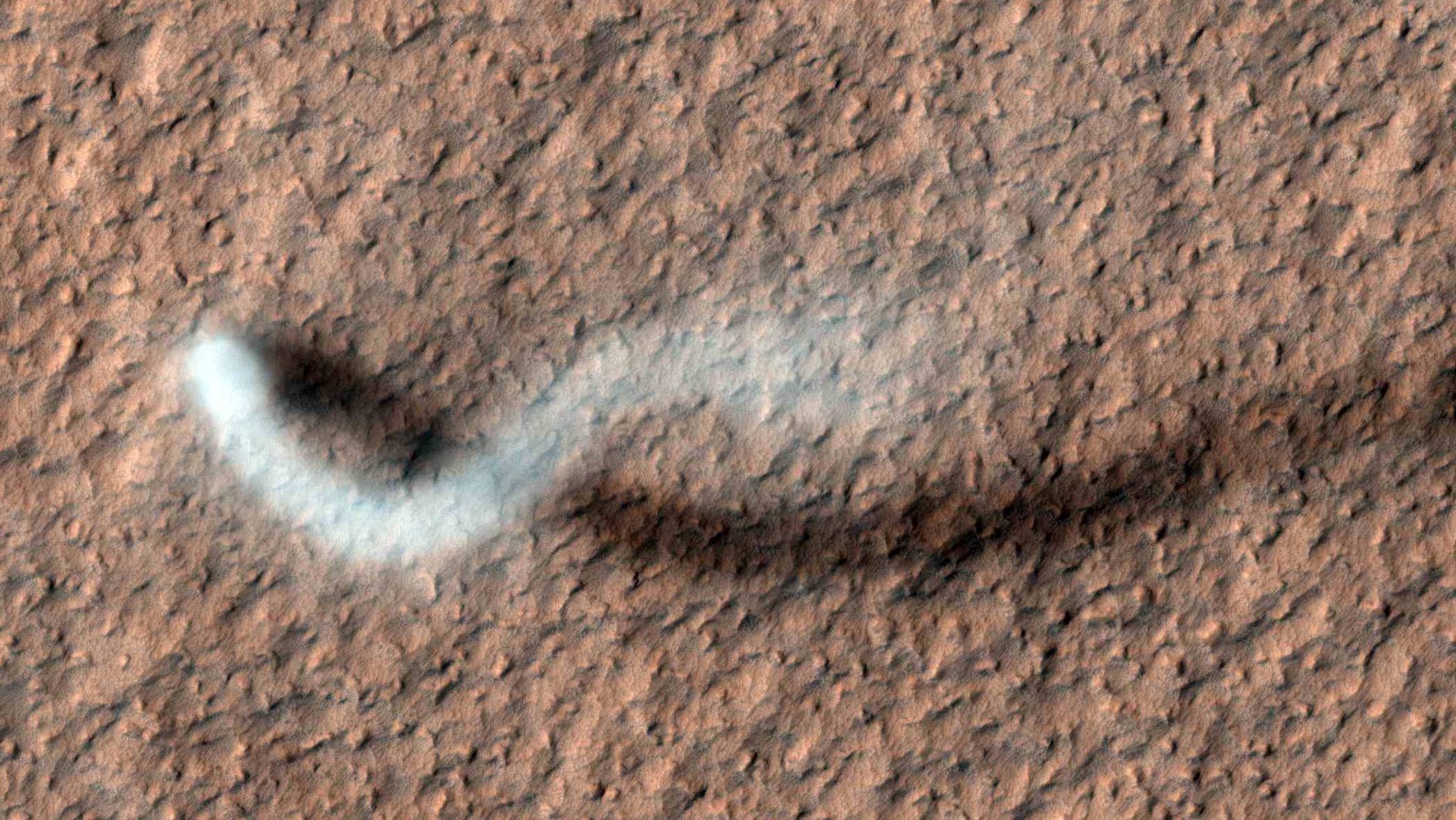
[ad_1]

For years, space agencies have turned to analog missions on Earth to prepare for robotic and crewed missions to other worlds. Researchers have also studied Earth-based phenomena to understand what natural processes are going on elsewhere. The latest program to join the analog catalog is a study from NASA’s Jet Propulsion Laboratory (JPL) in California that’s analyzing dust devils on Earth to learn about their counterpart on Mars.
In a presentation Wednesday (Dec. 7) at the 183rd Meeting of the Acoustical Society of America in Nashville, Louis Urtecho, an undergraduate student conducting the research through JPL, detailed his team’s study of dust devils, or brief whirlwinds, in the Mojave Desert.
“The abundance of dust devils on Mars could have implications for the lifetimes of many missions. In fact, dust devils have already played a role in past missions,” Urtecho said in a statement. “Opportunity and Spirit rovers’ lives were extended because friendly dust devils blew dust off their solar panels. But Opportunity eventually succumbed to a global dust storm on Mars, showing the importance of dust loading in the atmosphere.”
Related: Mars dust devil! Curiosity rover spots Red Planet twister (photos)
Given the limited resources on Mars, it’s difficult to study Martian dust devils in depth. Fortunately, the phenomenon occurs frequently in Earth’s deserts.
The JPL team is analyzing seven years of pressure data taken by microbarometers at the Nevada Nuclear Security Site in the Mojave Desert, searching for the telltale signatures of dust devils: drops in pressure in the center of the vortices that fluctuate like an electrocardiogram (EKG) signal. With so much information to sift through, the team has developed an automated detection algorithm to identify the relevant data. Eventually, the team will adjust its analysis of the dust devils to Martian atmospheric conditions.
“The hope is that with our dust devil detector we will be able to learn more about the formation characteristics of convective vortices and how they move across various landscapes,” Urtecho said. “This will improve the accuracy of Martian weather models, which has a direct impact not only in understanding dust cycles on Mars and the role they have played in its evolution, but also the operation of future robotic and possibly crewed missions.”
Follow Stefanie Waldek on Twitter @StefanieWaldek. Follow us on Twitter @Spacedotcom and on Facebook.
[ad_2]